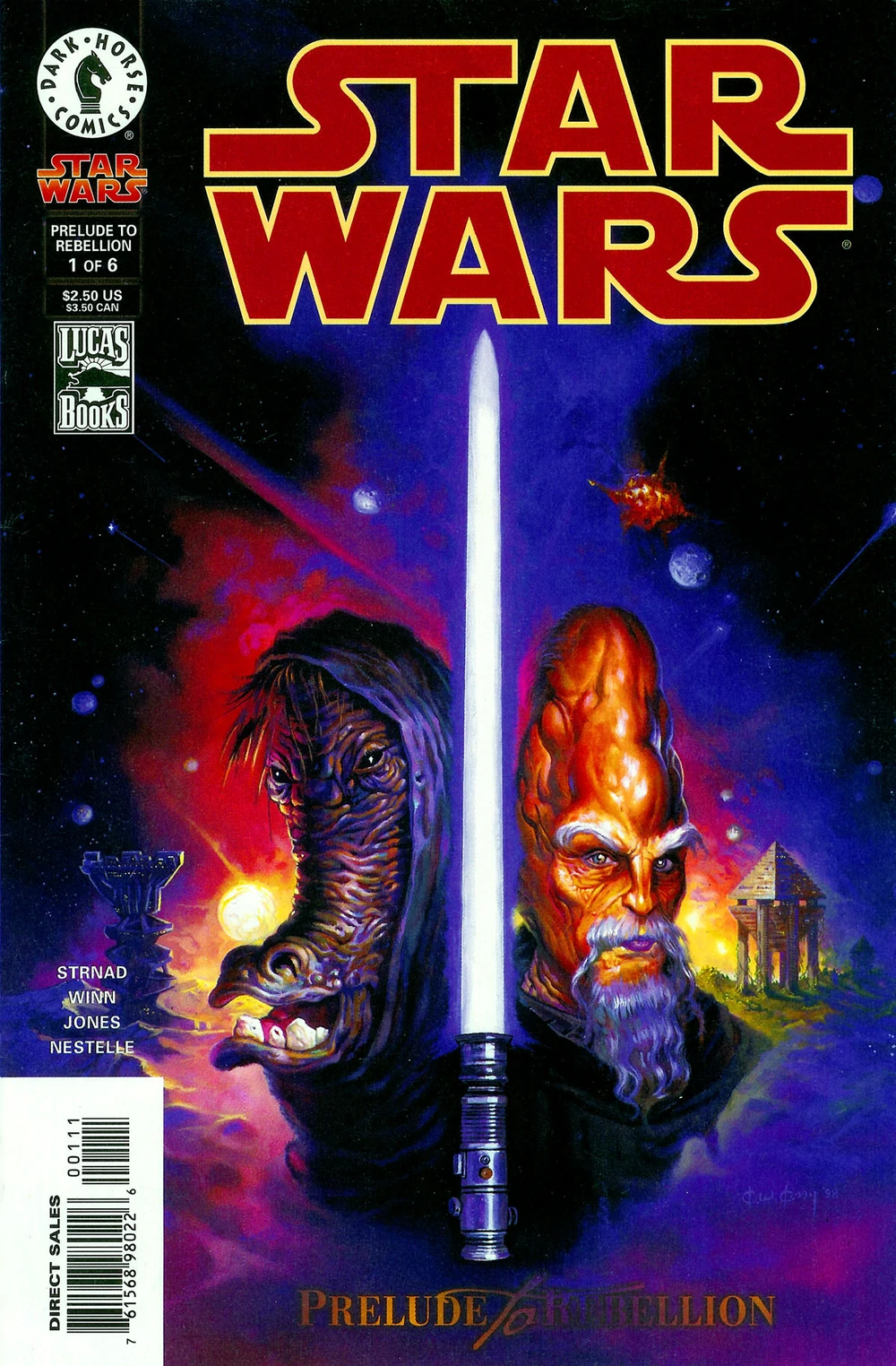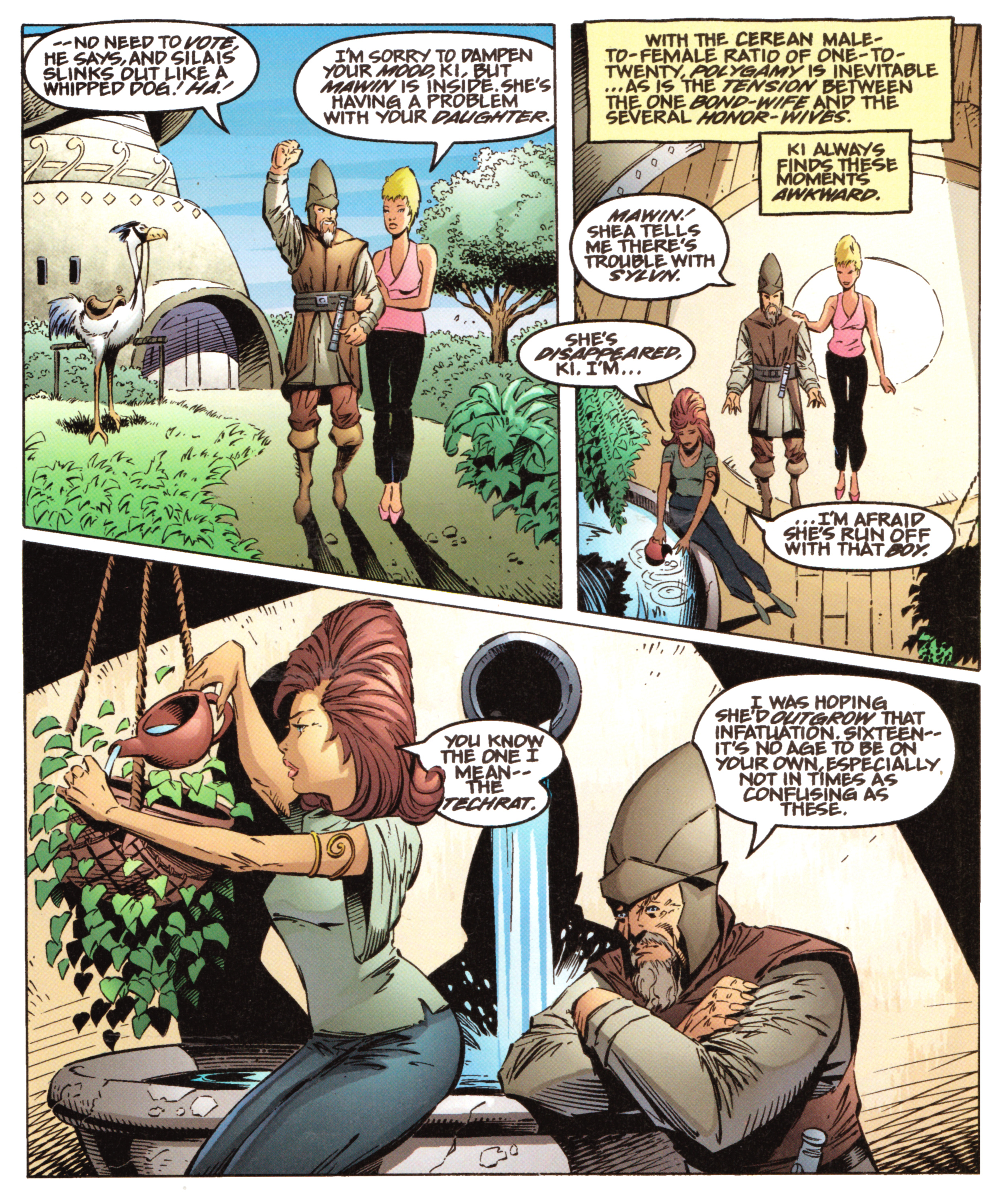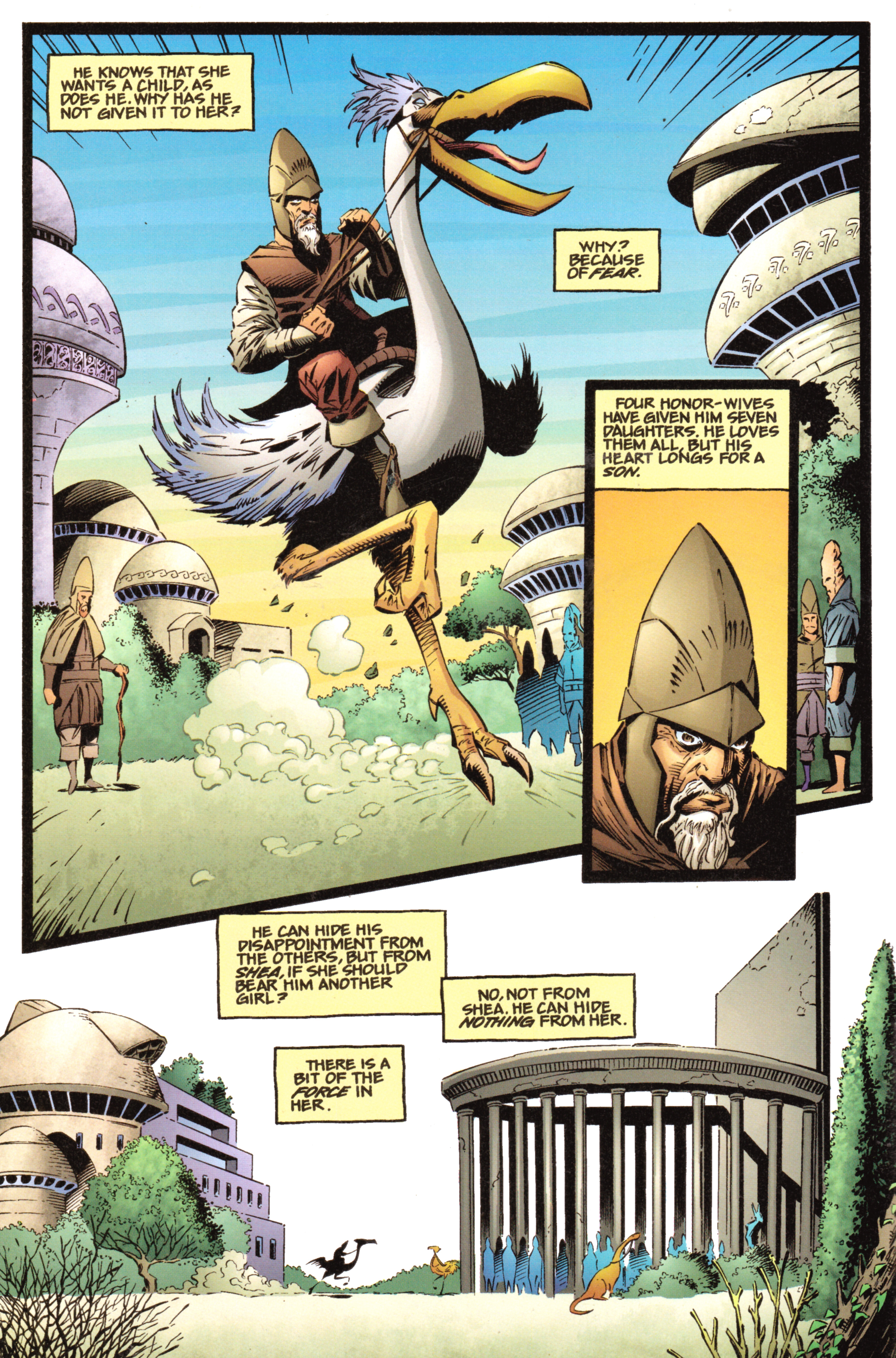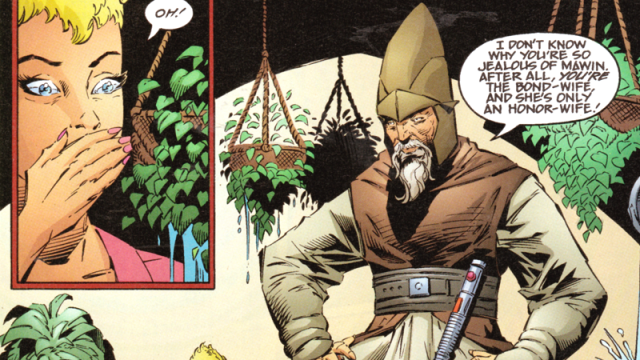With the heady mix of an unnecessarily passionate fanbase and overwhelmingly archived canonical world, Star Wars fandom is the perfect hellscape for arguments over what a certain kind of thing a character can be. The Jedi are no exception, and the idea of Force users adopting that title if they don’t perfectly gel with the warrior monks we met in the Prequels and beyond still bristles some. But there was a time when that was not always the case.
Back in the ‘90s, the Star Wars Expanded Universe was flourishing. It told the stories of both the Jedi Order that Luke Skywalker established after Return of the Jedi, and delved back far into it the past to set up folkloric tales of their very origins. Back then, the strictly defined version of the Jedi that we would come to meet when George Lucas revisited his beloved saga with The Phantom Menace was a twinkle in the mind’s eye. The ideological divide that would eventually push Anakin Skywalker to the dark side — the very idea of attachment as the antithesis to a Jedi’s role — even less so.
The New Jedi Order had Knights and Masters who were husband and wife, who raised children that joined the Order like their parents before them, Luke included. But what would be of the version of the Order Luke was building back up from, the one ravaged by the mysterious Clone War and the rise of the Empire? Fans began to learn in the pages of what would come to be known as Star Wars: Republic.

When it launched in late 1998 — half a year before The Phantom Menace hit theatres — Dark Horse’s new ongoing series (then simply titled Star Wars) kicked off with two six-issue arcs set in the year leading up to the events of the movie. The first two arcs of the series were called Prelude to Rebellion (by Anthony Winn, Jan Strnad, and Robert Jones) and Outlander (by Timothy Truman, Tom Raney, Rick Leonardi, and Al Ri). Instead of focusing on events around the movie or in the Jedi temple, they introduced us to a peculiar Jedi teased in The Phantom Menace’s background of alien Jedi characters: the large-headed Cerean Ki-Adi-Mundi, then a newly minted Jedi Master and member of the Council.
Prelude and Outlander are fascinating tales for many reasons, if only for the way they cast Ki-Adi as a sort of wandering samurai rather than the peacefully meditative Master of the Council we would see in Phantom Menace. The missions he was sent on thrust him into the criminal underworld of mercenaries and thugs like Jabba the Hutt. In Prelude, he fights to clear his name from a falsified murder charge after advocating that his technologically-primitive homeworld accept off-world aid, and in Outlander he’s tasked with locating an ex-Jedi Master (!) who’s left the Order to become a leading Tusken Raider (!!). Here alone they touch on worldbuilding ideas that the new trilogy would distantly hint at as it progressed, but what makes Ki-Adi-Mundi so fascinating in these stories is that he has a life outside of the Jedi Order. In fact, he has a family.

Our introduction to the Mundi family, moments into the first pages of Prelude to Rebellion, is not presented as a shocking revelation. After all, Prelude began at a time when Jedi rules of attachment were not so strictly defined. Even the fact that Ki-Adi has not one wife, but several — a primary Bond-Wife, Shea, and multiple honour wives, explained away as due to Cereans having an overwhelmingly female population, necessitating polygamous relationships as the norm — is not scandalous, it’s just part of Cerean society. In the hindsight we have that, half a year after this, we’d watch him needle a young Anakin Skywalker for daring to miss the mother he left back in bondage, thousands of lightyears away on Tatooine, it’s almost comically hypocritical. A Jedi Master, with not one romantic attachment, but many! But at the time, this was just what Jedi could be, and Star Wars: Republic gave Ki-Adi-Mundi a remarkable texture with it.
Prelude to Rebellion deals with this the most, given its larger story around Cerea’s lack of technological advancement. There’s also the push and pull of Republic and Cerean interests putting Ki-Adi at the centre of a much larger societal divide that tugs between his commitment to the Jedi, the corrupted Republic those Jedi serve, and his own homeworld and people. It’s a conflict made personal to Ki-Adi, when one of his daughters, Sylvn, finds herself dragged into a movement of younger Cereans manipulated into advocating for the planet’s acceptance into the Republic.

The moments with Ki-Adi and his wives spike curiosity for the mere fact of their romantic nature, but they also humanize him. In a few pages, he becomes more than a Jedi Master; he’s a husband who loves his wives deeply, almost as much as he can inadvertently put his foot in his mouth with them, he’s a father concerned with his legacy, with his desire to raise a son alongside his daughters, who he wants the best in life for even as they rebel against him as all teens are wont to do. They’re feelings that spark in him compassion and joy, yes, but also insecurities, moments of fear and anger — things we are told lead to the Dark Side, and yet they are understandable things, felt by a Jedi Master.
It feels far removed from the distanced, cold, even cruel Council Masters we saw deny Anakin his training in The Phantom Menace, even further from the ones who would eventually watch him quietly fall under the thrall of Palpatine, blinded by both their declining ability to read the Force and the fires of the Clone Wars. Republic began in a world that had forged its own path of what the Jedi of this era could be, in a world where we barely knew what would come to define these Knights of the Old Republic. It was a world that would unfold to give us a view of the Jedi we would find ourselves mercilessly attached to for years, especially when confronted with Force users who deviate from it.
Even as Star Wars’ current iteration of canon — itself confining the pages of Republic to legend — slowly but surely begins to re-explore what the Jedi could be outside of the confines of the recalcitrant Order in decline we saw in the Prequels, revisiting the first few forays into the kinds of stories being told about this era of Jedi makes for a fascinating parallel.
